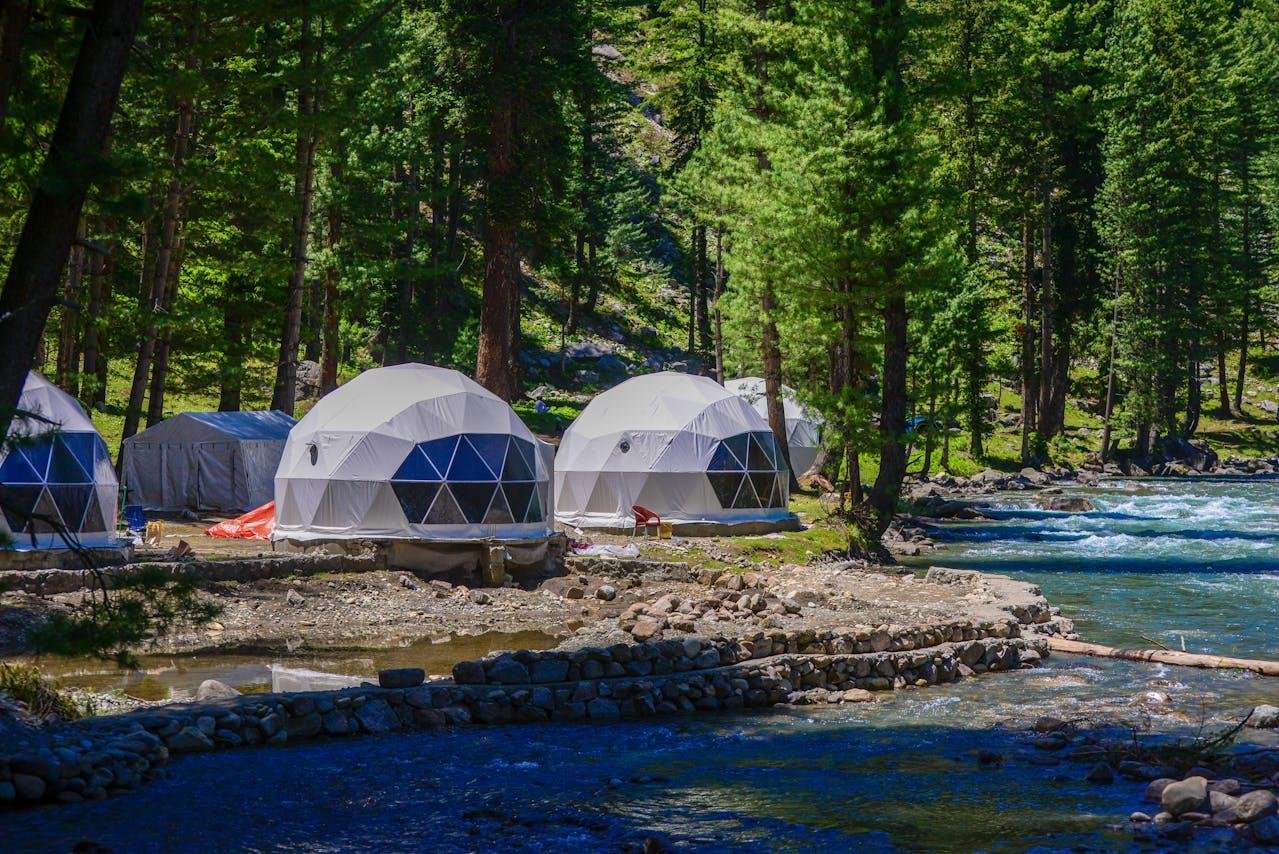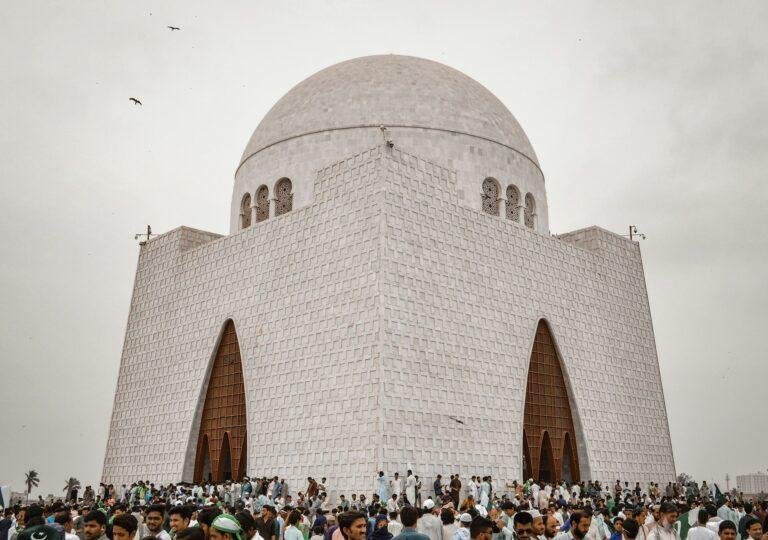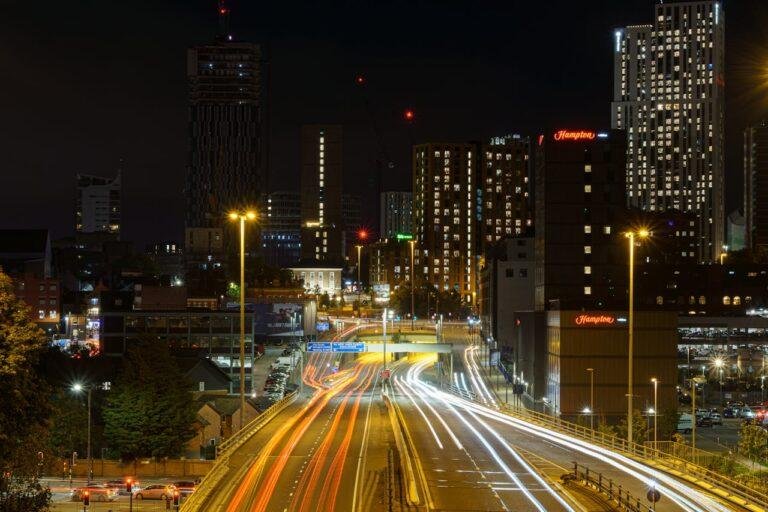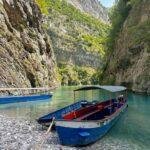Located in the Upper Dir District of Khyber Pakhtunkhwa, Kumrat Valley remains one of Pakistan’s most breathtaking yet under-visited travel hidden gems. Draped in lush green forests, shaped by the roaring Panjkora River, and shadowed by the mighty Hindu Kush mountains, it offers a landscape so rich in natural beauty that it feels like a dream. From Jahaz Banda Meadows to Katora Lake, and riverside camping to hidden waterfalls, this is where true nature lovers go off the grid.
If you’re planning to visit Kumrat Valley and Kalam Valley for a getaway and searching for the top things to do in Kumrat Valley, you’ve landed in the right place. Whether you’re starting your journey to Kumrat from Islamabad, Swat, or Dir, this guide covers everything you need to know.
Things to Do in Kumrat Valley
1. Marvel at the Panjkora River – The Valley’s Lifeline
The Panjkora River is the soul of Kumrat Valley, flowing with crystal-clear water sourced from glaciers high up in the Hindu Kush mountains. As you enter the valley through Thall, it’s the first breathtaking sight to greet you. The river snakes through the valley floor, nourishing the lush meadows, alpine forests, and farmland on its way.
Locals often describe it as the “heartbeat of Kumrat,” and it’s easy to see why—its gentle roar and cold, misty breeze bring an unmatched calm to the area.
Why Visit the Panjkora River?
- Scenic beauty: Snow-capped peaks reflect on its surface during golden hours.
- Perfect for picnics and tea breaks: Families and solo travelers alike gather on its banks to enjoy traditional food and chai.
- Photography hotspot: Whether you’re capturing sunrise fog or twilight reflections, the river is an unbeatable subject.
- Camping spot: The flat areas along the river are perfect for pitching tents. You’ll fall asleep to the soothing sound of rushing water and wake up to sunrise-kissed mountains.
Pro Tip: Avoid camping too close during monsoon season (July–August), as sudden water level rises are common.
2. Trek to Jahaz Banda Meadows – Nature’s Open Canvas
The Jahaz Banda Meadows are one of the most surreal places to explore in the Upper Dir region. Located above Kumrat Valley, this alpine plateau sits at an altitude of approximately 3,100 meters (~10,170 feet) and is surrounded by massive cliffs and snow-laden peaks.
Getting to Jahaz Banda is a two-part adventure:
- Jeep Ride from Thall to Jandrai village – The road is steep and unpaved, only accessible via 4×4 jeeps.
- Trek from Jandrai to Jahaz Banda – A moderate 1.5 to 2-hour trek through dense pine forests, open glades, and wildflower-covered trails.
Why Trek to Jahaz Banda?
- Raw beauty: Think endless green meadows, flocks of sheep grazing freely, and panoramic views of the Hindu Raj mountains increase the beauty of the valley.
- Year-round charm: Visit in June to September for green pastures and colorful wildflowers, or in late October for a snowy landscape.
- Camping heaven: The flat grassland is ideal for camping under the stars, far away from any city lights.
- Drone shots: Aerial views of Jahaz Banda resemble an untouched paradise—many travelers call it the “Heaven of Pakistan.”
Fun Fact: The name “Jahaz Banda” literally translates to “Ship’s Meadow,” possibly due to the large rock formations and flat meadow that look like the deck of a ship from afar.
3. Visit Kumrat Waterfall – A Refreshing Gem
Tucked amidst towering deodar trees and mossy rocks, the Kumrat Waterfall is one of the most refreshing spots in Kumrat Valley. It’s a relatively small yet stunning cascade, creating a chilly plunge pool at the base—perfect for a quick dip or just soaking your tired feet after a hike or jeep ride.
The surrounding forest adds to its serene vibe, and the gentle roar of the water makes it feel like nature’s own meditation soundtrack.
Why Visit the Kumrat Valley Waterfall?
- Perfect picnic stop: Pack a mat and enjoy riverside snacks with a soundtrack of cascading water.
- Instagram-worthy backdrop: Misty water, tall pine trees, and scattered boulders make it a dream for photographers.
- Accessible for all: Whether you’re on a family road trip or a solo retreat, this spot is easy to reach by jeep—just a short drive from the main Kumrat Valley camping area.
Travel Tip: Visit in the early morning to avoid crowds and capture the soft sunlight filtering through the forest.
4. Dip Into Kala Chashma – The “Black Spring”
If you’re after something cool, pure, and invigorating, head straight to Kala Chashma, one of the most unique natural springs in Kumrat Valley. The name “Kala Chashma” translates to “Black Spring,” named after the dark mineral-rich rocks at the base of the bubbling spring.
Even during the hottest summer months, the water here stays ice-cold, making it a thrilling stop for hikers, trekkers, and anyone craving a sip of pure mountain water.
Why Kala Chashma is Worth It:
- Chilling refreshment: Brave souls dip their feet in; some even splash their faces or take a fast rinse under the freezing flow.
- Nature untouched: Surrounded by greenery and silence, it’s a perfect place to pause, breathe, and reconnect with nature.
- Fill your bottles: Many travelers believe the spring water is not just safe but mineral-rich and energizing.
Fun Tip: Bring a small towel—you’ll want to dry off after sticking your feet in the freezing spring!
5. Hike to Katora Lake – An Alpine Treasure
Katora Lake is one of the most enchanting alpine lakes in Pakistan, perched high in the Hindu Kush mountains and accessible only to those ready to embrace a challenging yet soul-rewarding trek. The name “Katora,” meaning “bowl” in Pashto, perfectly reflects the lake’s natural shape—cradled like a sapphire in the arms of snowy peaks.
To reach Katora Lake, you’ll first trek to Jahaz Banda, a stunning meadow at around 10,000 feet. From there, the real adventure begins—an uphill 3–4 hour hike that winds through narrow trails, rocky passes, and panoramic ridges.
What Makes Katora Lake Special?
- Scenic intensity: Think turquoise-blue water, snow patches, and wildflowers that bloom along your path.
- Iconic reflection shots: On clear days, the surrounding peaks mirror off the lake’s surface—perfect for landscape photographers.
- Not for the faint-hearted: The trek is moderately difficult, requiring good stamina, sturdy shoes, and early preparation.
Trek Tip: Plan your hike between July and September, when the snow has melted, trails are passable, and the meadows are at their greenest.
6. Relax in the Lush Green Forests
If the fast-paced world has you burnt out, the ancient deodar forests of Kumrat Valley are your reset button. These massive trees, some centuries old, create a dreamy green canopy perfect for forest bathing, quiet reflection, or a mid-day nap in a hammock.
This isn’t your average patch of trees. These forests stretch wide and tall, offering shaded paths lined with wild ferns and echoing with the calls of exotic birds. It’s one of the best places to visit in Kumrat Valley if you’re after serenity over selfies.
How to Soak It All In:
- Light trekking trails run between Kala Chashma and Kumrat base camp, suitable for beginners and families.
- Bird watching heaven: Bring binoculars—you might spot Himalayan monals, finches, and golden eagles.
- Hammock-ready spaces: No need for fancy campsites—just string up your hammock and let the forest work its magic.
Forest Tip: Avoid playing loud music—this place is sacred to nature lovers and best experienced in quiet appreciation.
7. Camp Under the Stars – By the River or Forest
There are campsites—and then there’s Kumrat Valley camping. Picture this: a crackling bonfire, a sky so packed with stars it feels like it might burst, and the gentle murmur of the Panjkora River nearby. That’s not a dream—it’s what you get when you pitch your tent in Kumrat.
Unlike commercial tourist spots, Kumrat doesn’t come with concrete hotels or neon lights. What it does offer is a raw, untamed wilderness perfect for stargazers, nature lovers, and off-grid adventurers.
Top Spots to Camp:
- Riverbanks near Kala Chashma and Panjkora – great for soothing water sounds at night
- Forest clearings between the Thal and Jahaz Banda route – shaded, peaceful, and less crowded
- Open grasslands near Jahaz Banda – ideal for group tents and drone photography
Important Camping Tips:
- Bring your tent, sleeping bag, and supplies, or rent them from Thal’s small gear shops.
- Best months to camp: May through early October (snowfall begins mid/late October).
- Avoid camping too close to the river during the rainy season—flash floods can happen.
8. Experience the Full Journey to Kumrat
Getting to Kumrat isn’t just about the destination—it’s a full-on adventure through Pakistan’s remote northern landscapes. This journey takes you from urban chaos to mountain calm in a matter of hours.
Travel Route Breakdown:
- Start in Islamabad and hop on the M16 Swat Motorway.
- Exit at Sher Khan Interchange, heading toward Dir via Timergara and Thal.
- Once in Thal, the road ends—but your real journey begins. A 4×4 jeep is your ticket into Kumrat’s core, with bumpy off-road trails and jaw-dropping views around every turn.
Quick Facts:
- Total distance: ~370 km
- Estimated travel time: 8–9 hours (jeep ride alone from Thal to Kumrat takes ~1 hour)
- Fuel & food: Fill up in Dir or Thal; there are limited facilities beyond that point.
Pro Travel Tips:
- Leave early in the morning to avoid driving after dark—roads get steep, narrow, and treacherous.
- Offline maps are a must—there’s little to no mobile signal past Thal.
- Hire a local guide if it’s your first trip. It’s safer, and they know all the secret picnic and camping spots.
9. Explore the Culture of the Upper Dir District
Kumrat might be known for its breathtaking landscapes, but its soul lies in the warmth of the people who call this rugged land home. The valley falls within the Upper Dir District of Khyber Pakhtunkhwa, a region rich in Pashtun and Kohistani culture.
Here, hospitality isn’t a courtesy—it’s a code. You’ll often be welcomed with steaming cups of green tea (kahwa), invited to sit in roadside wooden cabins, and offered local food like Chapli Kebab, roghani naan, and lamb karahi made the traditional way.
Things to Experience:
- Try local dishes at roadside dhabas in Thal or nearby villages
- Dress modestly to show respect for local customs, especially in rural areas
- Ask before taking photos—some elders and families are sensitive about it
- Language spoken: Mainly Pashto, with pockets of Kohistani dialects
Fun fact: You won’t find flashy tourism here—just real people, raw culture, and a refreshing break from fast-paced life.
Conclusion
If you’re yearning for fresh mountain air, lush green forests, riverside adventures, and silence broken only by birds and waterfalls, then it’s time to plan your journey to Kumrat.
Whether you’re gazing at the Panjkora River, trekking to Katora Lake, or relaxing near Kala Chashma, the list of things to do in Kumrat Valley is more than a checklist—it’s a collection of unforgettable experiences.
Perfect for families, solo backpackers, or couples looking for peace, Kumrat Valley, located in the upper reaches of Pakistan’s north, offers the ideal balance of remoteness and raw natural beauty. Once you’ve been there, you’ll understand why so many call it Pakistan’s pine paradise.








